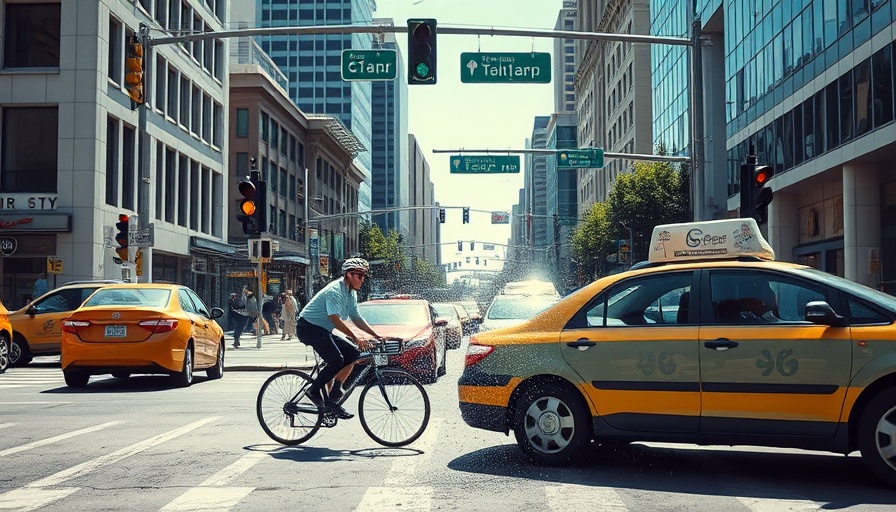
Taxi Accident Highlights Risks for Cyclists
The recent incident on the West Side Highway serves as a stark reminder of the dangers faced by cyclists in urban settings. On July 26, dash-cam footage captured a taxi striking a 28-year-old biker on the W. 39th St. stretch of the highway. Fortunately, the biker escaped uninjured, flipping over the taxi and landing safely on the road.
Understanding Traffic Dynamics
Commentary from witnesses on the social platform Reddit indicates potential confusion regarding traffic signals at this intersection. Some users noted that the lights for cyclists may not always align with those for vehicles, creating a hazardous situation. According to one user, "Bikers have their own traffic lights that do not always coincide with the lights on the Westside Highway," pointing to a systemic issue affecting safety.
The Bigger Picture: Cyclist Safety in NYC
This event isn’t isolated; it falls within a troubling trend of increased accidents involving cyclists and vehicles in New York City. With more residents opting for bikes as their primary mode of transportation, urban planners and policymakers must reconsider how streets and traffic signals are designed to ensure the safety of all road users. Increased visibility of bike traffic signals and public education on shared road usage are crucial steps to prevent similar accidents.
Community Responses and Future Recommendations
The community reaction reflects a concern not only for the individual involved but also for the systemic risks faced by cyclists citywide. Engaging the community in discussions about safer cycling routes and improved road design could lead to essential changes that prioritize the safety of cyclists. Advocates call for better signage and clearer traffic light systems, which could significantly reduce the likelihood of future incidents.
Wrapping Up: A Call for Change
As we draw insights from this incident, it is crucial for all parties involved—city planners, law enforcement, and the community—to come together to foster a safer environment for cyclists. The combination of thorough urban planning and vigilant road use awareness can ultimately make New York City a safer place for everyone.
 Add Row
Add Row  Add Element
Add Element 



Write A Comment